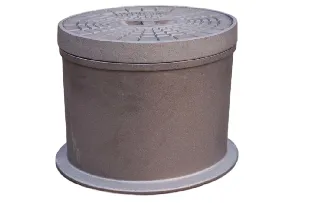custom manhole covers
The Art and Utility of Custom Manhole Covers
When we think about public infrastructure, manhole covers are seldom the first things that come to mind. Yet, these often-overlooked objects play a crucial role in urban environments. Custom manhole covers are becoming more popular as cities aim to blend functionality with aesthetics. This article explores the significance and impact of custom manhole covers, examining their design, utility, and cultural implications.
The Functional Purpose of Manhole Covers
At their core, manhole covers serve a vital function they provide access to underground utilities such as sewer lines, water mains, and electrical conduits while ensuring public safety. Made of materials like cast iron or reinforced steel, these covers are designed to withstand significant weight and pressure from vehicles and pedestrians. A well-made manhole cover prevents accidents by securely sealing off potentially hazardous openings.
Despite their primary utilitarian function, the potential for innovation and design in manhole covers remains largely untapped. Traditional covers are typically bland, often just circular metal plates with basic markings. However, as urban landscapes evolve and municipalities seek to enhance their aesthetic appeal, custom designs have emerged as a trend worth exploring.
Custom Designs Where Art Meets Function
Custom manhole covers allow cities to showcase their unique identities. Artists, urban planners, and local governments collaborate to create designs that reflect cultural heritage, local history, or even community values. For instance, a city with a rich maritime history might feature manhole covers engraved with designs of ships or waves, while another might incorporate symbols from indigenous cultures.
The designs can also be practical. For example, covers can be inscribed with helpful information like public transport routes or QR codes linking to local services. This blend of utility and art enhances public spaces, transforming mundane infrastructure into an engaging and informative element of urban life.
The Environmental Impact and Sustainability
In addition to their aesthetic benefits, custom manhole covers can contribute to environmental sustainability. Innovative materials and designs can minimize heat absorption, reducing the urban heat island effect. Some cities are even exploring the incorporation of permeable designs that allow rainwater to seep through the covers, promoting better water management.
custom manhole covers

Moreover, custom designs can also be used as a platform for raising awareness about environmental issues. For example, a series of manhole covers could be engraved with powerful messages about pollution or climate change, acting as tactile reminders for passersby to consider their impact on the environment.
Community Engagement and Pride
The creation of custom manhole covers also fosters a sense of community engagement and pride. Public art projects that involve local artists or schools can result in designs that resonate strongly with the community. Residents feel a sense of ownership when they see artwork that represents their collective identity adorning their streets.
Furthermore, such projects can enhance tourism. Unique, artistically designed manhole covers may catch the eyes of visitors, prompting them to explore and photograph these artistic elements, sharing their experiences on social media and promoting the city more effectively.
Challenges in Implementation
Despite the many benefits, there are challenges to implementing custom manhole covers. Municipal budgets may be constrained, and some government officials might prioritize functional over aesthetic improvements. Additionally, the process of public art and design approvals can be lengthy and complicated.
However, overcoming these challenges can lead to positive outcomes. Cities that invest in custom manhole covers demonstrate a commitment to innovative urban design, enhancing quality of life for residents and improving public spaces.
Conclusion
In conclusion, custom manhole covers represent a fascinating intersection of art, functionality, and urban identity. By turning these everyday objects into profound symbols of community pride and environmental consciousness, cities can transform the urban landscape. As more municipalities recognize the potential of custom designs, we can expect to see neighborhoods that not only serve their practical purposes but also celebrate local culture and heritage. In the effort to make cities more livable, custom manhole covers may be a small yet significant piece of the puzzle, reminding us that even the most utilitarian objects have the potential to be beautiful.
-
The Smarter Choice for Pedestrian AreasNewsJun.30,2025
-
The Gold Standard in Round Drain CoversNewsJun.30,2025
-
The Gold Standard in Manhole Cover SystemsNewsJun.30,2025
-
Superior Drainage Solutions with Premium Gully GratesNewsJun.30,2025
-
Superior Drainage Solutions for Global InfrastructureNewsJun.30,2025
-
Square Manhole Solutions for Modern InfrastructureNewsJun.30,2025
-
Premium Manhole Covers for Modern InfrastructureNewsJun.30,2025
